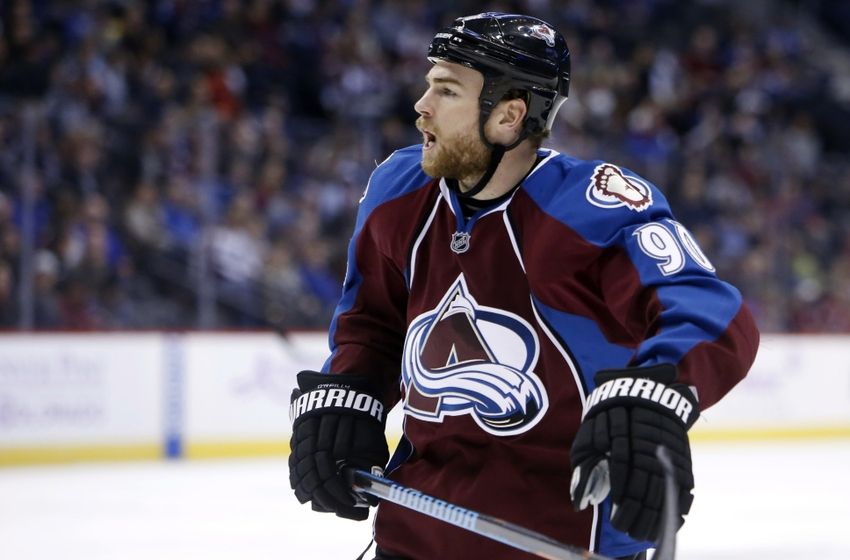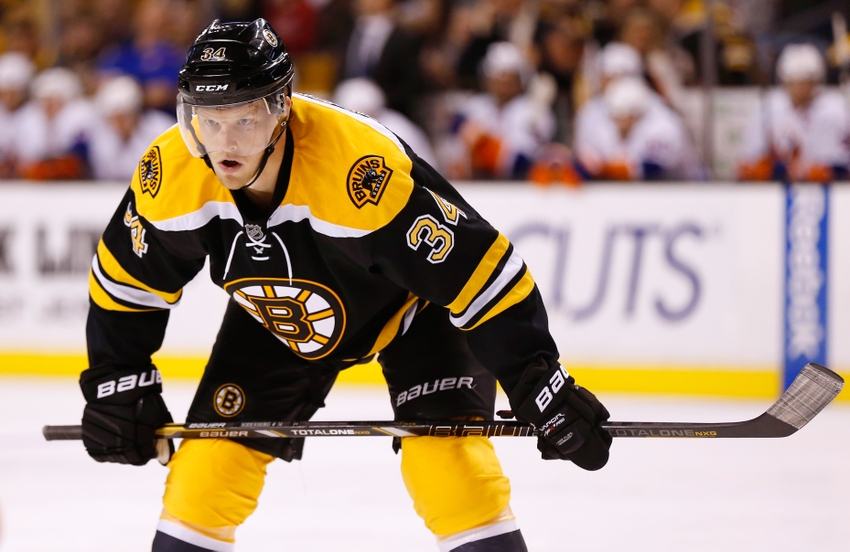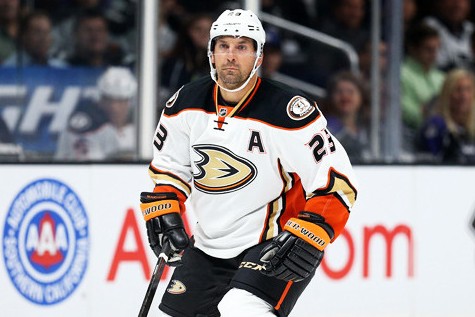© 2026 ALLCITY Network Inc.
All rights reserved.

As the dust kicked up during the NHL draft and free agency settles, the view of the future of the Colorado Avalanche comes into clearer focus.
Avalanche general manager, Joe Sakic, had a lot on his plate entering this summer. He just watched his hockey club regress from a captivating season which saw them surge to the top of the Central Division, to a team that didn’t even make the playoffs.
The future of Ryan O’Reilly, questions on the defensive side of the puck, and a lackluster conglomerate of players surrounding the young core were all major issues facing the Avalanche brass. This offseason, there is no denying, the Avalanche have taken an aggressive swing at fixing those issues. So, the question we now ask is — where do the Colorado Avalanche stand?
The Franchise-Defining Trade
The biggest move the Avalanche made, was trading Selke-calibre centerman, Ryan O’Reilly, to the Buffalo Sabres. The move precipitated from a dark cloud that has hung over Avalanche nation for the past couple of years, and much like a rainstorm, seeing the O’Reilly-saga come to an end has been refreshing.
Contract demands played a large role in the decision to move on from O’Reilly, who just signed a 7-year extension worth $52.5M with the Sabres. Paying O’Reilly a $7.5M annual average value (AAV) salary over the term is a bold decision by the Buffalo front-office, but honestly, I think it is a fair price.
Here’s the rub — a fair price doesn’t always mean you go out and purchase that item — it has to make sense within the context of your own situation. I did a market-comparable analysis of Ryan O’Reilly, and came to the conclusion that $7-7.5M AAV was what he should expect to earn during his prime years.

From the Sabres’ perspective, I think O’Reilly makes a lot of sense, and will be well worth that contract. I don’t find him overpaid, because he got what the market deems him to be worth. O’Reilly will provide great insulation for Jack Eichel and the other Buffalo youngsters coming up through the system over the next few years, and I predict him to be the Sabres’ captain within two years.
From the Avalanche’s perspective, they are in a much different situation. I myself love what O’Reilly brings to a hockey team, and the fan in me will miss watching him play in Denver. However, a few key points have been bouncing around in my head since the trade went down, and I’ve really started to see a bigger picture take shape sans Ryan O’Reilly.
Let’s start the fact that Matt Duchene and Nathan MacKinnon should be the top two centers on the Avalanche going forward. Duchene is on a team-friendly deal, and when on his game, is a game-changing speedster and playmaker. MacKinnon was the first-overall selection in the draft just over two years ago, and in my mind, is still a future superstar in the league. These two, along with Gabriel Landeskog, Erik Johnson, and Semyon Varlamov are all probably higher on the value totem pole than O’Reilly was.
Secondly, in the past five seasons, the Avalanche have made the playoffs just once with Ryan O’Reilly playing a key role. This isn’t to say I blame O’Reilly, but rather, the Avalanche were a flawed team. Throwing exorbitant funds at a roster that wasn’t getting the job done could be argued as insanity.
Within the context of the Avalanche’s situation, O’Reilly’s value on the ice would likely experience significantly diminished returns at an AAV of $7.5M, especially considering the need to improve other parts of the roster. To put it bluntly, it seems O’Reilly priced himself into a luxury the Avalanche could no longer afford, whereas a rebuilding team like Buffalo will gladly pay for his well-worth-it skill-set.
[pullquote]THE RYAN O’REILLY TRADE PRECIPITATED FROM A DARK CLOUD THAT HUNG OVER THE AVALANCHE FOR THE PAST COUPLE OF YEARS. MUCH LIKE A RAINSTORM, SEEING THE O’REILLY SAGA COME TO AN END HAS BEEN REFRESHING. [/pullquote]
Trading O’Reilly netted the Avalanche Nikita Zadorov, who is a promising young blueliner. His left-handedness makes him a natural partner for Erik Johnson or Tyson Barrie. Getting a 20-year old defenseman with promise is a major accomplishment for any NHL general manager, even at the expense of a guy like O’Reilly.
Reclamation project Mikhail Grigorenko is anything but a bust at just 21-years old. He gets a fresh start to prove he is more the player the Sabres thought they were getting on draft day in 2012, rather than the disappointing asset they moved on from last week.
Grading a trade before seeing any of the players skate in their new sweaters is a silly task, but I can’t help but give high marks to Joe Sakic for the deal he was able to get done. Especially after looking at the returns for Phil Kessel, Dougie Hamilton, and Brandon Saad.
J.T. Compher and A.J. Greer won’t factor into the Avalanche roster for a few more years, but bolstering depth at the forward position was a major need, and in addition to the key pieces coming to Colorado, this deal helped the Avalanche do just that.
Free Agency and the Draft
The Avalanche actively added new players through free-agency, and also landed Mikko Rantanen with the 10th overall selection in the 2015 NHL draft.
At 18-years of age, Rantanen probably would be best-served to hone his skills in a league below the calibre of the NHL for one more season, although his development has been accelerated by playing amongst men in the Finish Liiga for the past couple of years. With an impressive training camp, Rantanen may be in the mix for a roster spot.
Guaranteed to be on the opening night roster, barring injury, are forwards Carl Soderberg and Blake Comeau, as well as defenseman Francois Beauchemin.

Soderberg, while technically not a free-agent acquisition, was one of the prime centers set to be an un-restricted free agent (UFA). The Avalanche traded a 6th round pick to Boston for the right to negotiate a contract with Soderberg early, but for all intents and purposes, I would consider him to be a UFA addition.
While not the same player that Ryan O’Reilly is, Soderberg gives the Avalanche another reliable center. Paying a 29-year old $4.75M over five seasons is no bargain, but — I think Soderberg will prove to be a valuable addition to the Avs’ lineup, and help take some of the responsibility off of Duchene and MacKinnon to fill the O’Reilly void.
Soderberg put up 44 points last season with the Bruins, and I would argue he is undoubtedly capable of replicating those numbers with the Avalanche, or even exceeding them if given the opportunity to play with the likes of Gabriel Landeskog and Nathan MacKinnon. I would expect Soderberg to come very close to replicating O’Reilly’s point-production. O’Reilly’s superior defensive skills are what will be missed.
Comeau is one of the underrated signings of the day, and is a solid, dependable forward. Expect his sweet spot to be on the third-line, but his ability to traverse all levels of the lineup and contribute to the specialty teams make him well worth the $2.4M AAV the Avalanche will pay him for the next three seasons. Analytic gurus will appreciate Comeau’s subtle contributions on a nightly basis.
The most controversial signing for the Avalanche, was defenseman Francois Beauchemin. Beauchemin just turned 35-years old, and certainly isn’t the in-his-prime defenseman many Avalanche fans were hoping to see the team acquire to play with Erik Johnson.
That said, I think Beauchemin will improve the stability of the top pairing for the Avs significantly. He was relied on heavily last year by the Western Conference finalist, Anaheim Ducks. In fact, Beauchemin led the Ducks in ice-time last season, both during the regular season and the playoffs. Pairing Johnson with the veteran savvy of Beauchemin should allow each to flourish in the short-term.
Most Avalanche fans seem to agree that Beauchemin does improve the blue-line for next season, but their dissent lies in the price ($4.5M AAV) and especially the term (three years). While it is easy to compare free-agent deals after the fact, it is much more difficult to attract a free-agent to your city and organization in the moment. Andrej Sekera would have been a nice fit in Colorado, but hey, he has the right to go freeze in Edmonton and play with the wonder-kid.

Beauchemin was one of a mere handful of worthwhile defenseman on the market, and is still capable of playing top-pairing minutes. The nature of free-agency, is a symbiotic relationship, requiring both parties to be compatible. It is much more of a dating adventure, where you take a leap of faith, than it is a trip to the grocery store, where you can pick out exactly what you want and need.
Even if Beauchemin’s play slips over the duration of the deal, and he is more of a mid-pairing guy by the end of it, Avalanche fans should still be glad to have him on their side.
His wisdom will be valuable to Erik Johnson, as he transitions into the veteran elder statesman on the blueline. Youngsters Nikita Zadorov, Chris Bigras, Duncan Siemens, and Mason Geertsen, among others, will also benefit at one point or another from the professionalism and mentorship that Beauchemin will provide.
Zadorov in particular, should nestle up under Beauchemin’s wing (assuming the former Duck was allowed to keep one). Zadorov’s raw talent is immense, but his decision making and hockey sense need improvement to reach his full potential. Beauchemin has been a staple in solid, fundamental play for many years.
It is also worth noting, in year three of Beauchemin’s $4.5M deal, Brad Stuart’s $3.6M salary will come off the books. Financially, this will ease the potential pain of having an aging d-man sliding down the depth chart. The Beauchemin signing has been compared to the Stuart acquisition, but unlike Stuart, Beauchemin is still an NHL-quality defenseman. Sure, they both had age concerns when acquired, but look for Beauchemin to be a nice upgrade over what Jan Hejda brought to the Avs’ top pairing.
The Verdict
Based on the moves made this offseason, it is safe to say that Joe Sakic has done an admirable job of addressing the big issues facing the Avalanche this offseason. The O’Reilly situation was resolved in about as favorable a way as one could expect, the defensive core has two key additions, and the top-to-bottom depth of the organization is as strong as it has been in years.
Circling back to the original question asked (where do the Avalanche stand?), and I think they have taken great strides toward improving their future.
Do I think they are a better team than they were last season?
Cautiously, I’d say I think they are. Beauchemin and Johnson will provide Patrick Roy with the best defensive pairing on paper he’s had since becoming Colorado’s head coach.
Nikita Zadorov is likely to face growing pains and make some mistakes, but I still think he’s a big-time upgrade over Nate Guenin. Zadorov and Barrie will likely be a bit of a boom or bust pairing, but as they grow in confidence playing together, look for the duo to do a lot more booming than busting. I would expect Avalanche fans will still need to exercise some patience and temper expectations with Zadorov.
Losing Ryan O’Reilly hurts, don’t kid yourself. He did a lot of things on the ice very well, and was relied upon heavily by Patrick Roy in all situations.
The quickest way to replace O’Reilly’s value, is for Nathan MacKinnon to have a breakout season. If MacKinnon can become one of the top-five forwards in the NHL, the Avalanche become a significantly more dangerous hockey club.
Scott Burnside recently rated the Avalanche 22nd in the NHL in his offseason power rankings, which is evidence this team has something to prove. A dream season followed by a disappointing campaign means the jury is still out.
[pullquote]THE AVALANCHE HAVEN’T ENTIRELY FIXED THEIR SHORTCOMINGS THIS OFFSEASON, BUT THEY HAVE ACQUIRED AND GIVEN OPPORTUNITIES TO PLAYERS WHO HAVE THE POTENTIAL TO FIX THOSE SHORTCOMINGS IN TIME[/pullquote]
The Western Conference is ultra-competitive, and good teams can expect to miss the playoffs. The Avalanche’s current roster is every bit as talented as the 2013-14 team, but it takes hard work and a bit of luck to get results in the NHL. Nothing can be taken for granted. One thing we’ve learned, is that this team goes as its core guys go. I like that this team enters next season hungry, and with a chip on their shoulder.
Patrick Roy stated he wants to bring a Stanley Cup to Denver. Drinking from Lord Stanley’s chalice is the ultimate goal. I don’t think this team is quite there yet, although they certainly should be in the mix for a playoff spot next season.
I love analogies, so you’re going to get one. What the Avalanche I think realized with Ryan O’Reilly, is that they were never going to win that yard of the year award. O’Reilly was a magnificent, established plant, no doubt, but the yard itself just wasn’t up to par with the other yards in the neighborhood.
Trading O’Reilly tore up the Avalanche’s backyard a bit in the interim, but also opened up opportunity for new growth. Transplants Nikita Zadorov and Mikhail Grigorenko aren’t without thorns, but their potential blooms are tantalizing. Young sprouts Mikko Rantanen and Chris Bigras, among others, litter the landscape with hope.
You never know how plants will grow, and there is always risk that they cook in the sun, or get nibbled down by local wildlife. That said, Joe Sakic and Patrick Roy clearly have a vision for this team going forward. That vision is taking root, and I objectively believe this team has a brighter future than they did a few weeks ago. The catch is the necessity for excellent player development to reach that next level.
The Avalanche haven’t entirely fixed their shortcomings this offseason, but they have acquired and given opportunities to players who have the potential to fix those shortcomings in time. On paper, the Avs are marginally improved, but with a green-thumb, this organization is primed to get to yard of the year calibre soon with the current core. The dust of the offseason has settled. Time to start watering.
Comments
Share your thoughts
Join the conversation




